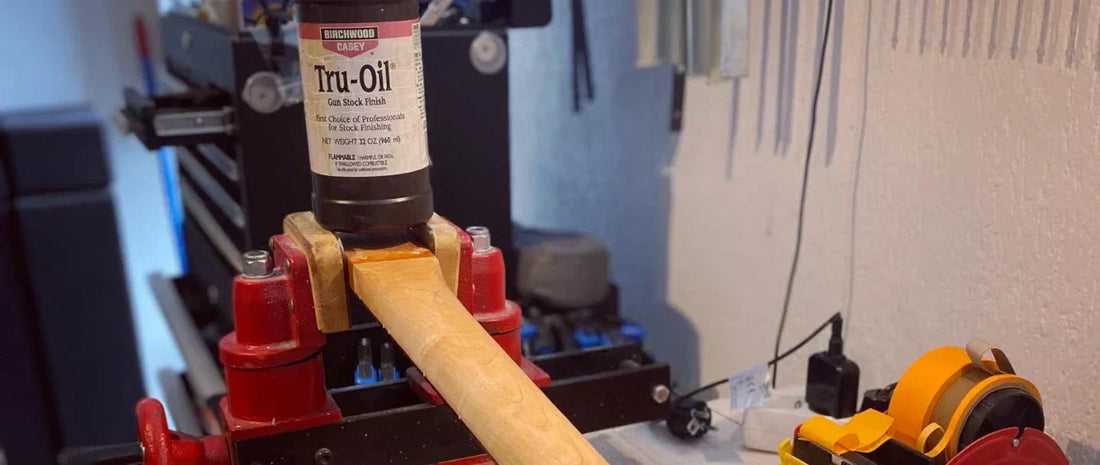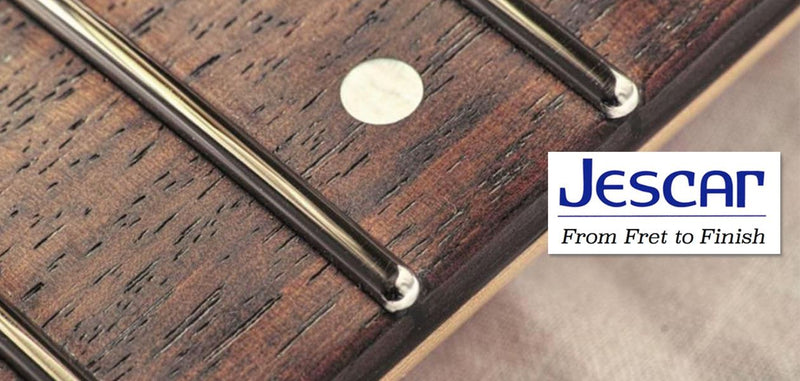
How to Use Tru-Oil for a Professional Guitar Finish
Share
Looking for a simple, reliable way to finish your guitar without a spray booth? Tru-Oil is a favorite among guitar builders and repair techs for a reason. Originally developed for gunstocks, Tru-Oil delivers a smooth, hand-applied finish that enhances wood grain, builds quickly, and feels great to play. In this post, we’ll walk you through exactly how to use Tru-Oil for necks, bodies, and touch-ups — and what you’ll need to get pro results from your workshop or even your kitchen table.
What Is Tru-Oil?

Tru-Oil is a fast-drying, hand-rubbed finish made famous for gunstocks, but now widely embraced by luthiers for guitar necks and bodies. Unlike thick varnishes or lacquers, Tru-Oil builds thin layers that cure to a hard, durable, and smooth finish. It can be applied with a cloth or your fingertip, requiring no spray equipment.
Because it’s thin and easy to control, Tru-Oil lets you build a finish gradually — achieving a beautiful satin to gloss sheen while enhancing the wood grain’s natural beauty.
Why Use Tru-Oil on Guitars?
- Easy application: No spray booth or special tools needed, just a rag or finger.
- Great for necks and headstocks: Feels smooth in the hand without being sticky.
- Builds durable finish: Hardens over multiple coats to protect the wood.
- Ages naturally: Develops a warm patina over time, adding vintage character.
- Compatible with most woods: Works well on maple, mahogany, rosewood, and more.
What You’ll Need
To get the best results with Tru-Oil, here’s what we recommend having on hand:
- Sandpaper - 320 and up for prepping the wood
- Tru-Oil - available in 90ml, 240ml, and 960ml bottles
- 0000 Fine Steel Wool - for buffing between coats
- Chestnut Tack Cloth - removes dust and sanding debris
- Micro-Mesh Pads - for ultra-fine polishing and final finish work
- Lint-free cloth or applicator pad - to apply Tru-Oil smoothly
Step-by-Step: Applying Tru-Oil
- Prep your guitar: Sand the surface smooth using appropriate grits for your wood. Use a Chestnut Tack Cloth to remove all dust.
- Apply the first coat: Using a lint-free cloth or your fingertip, apply a thin, even coat of Tru-Oil. Avoid pooling or thick spots.
- Let it dry: Allow the coat to cure fully (usually 1–2 hours).
- Buff lightly: Using 0000 steel wool, gently buff the surface to remove dust nibs and improve adhesion.
- Repeat: Apply additional thin coats, letting each dry and buffing between them. Usually, 5–8 coats build a durable, smooth finish.
- Final polish: After the last coat, use Micro-Mesh pads to polish the surface to your desired sheen, from satin to high gloss.
Tips for Best Results
- Apply thin coats only — thick coats can remain tacky or crack.
- Work in a dust-free environment to avoid imperfections.
- Let each coat fully cure before buffing or adding the next.
- Use light pressure when buffing to avoid sanding through the finish.
- Store Tru-Oil tightly sealed and away from extreme temperatures.
Tru-Oil FAQs
How long should I wait between coats?
Wait at least 1–2 hours for each coat to dry. For best results, overnight drying is recommended.
Can I use Tru-Oil over stain or dye?
Yes, Tru-Oil works well over most wood stains or dyes, but always test first on scrap wood.
What finish sheen can I expect?
Tru-Oil ranges from a soft satin to a mirror-like gloss depending on coats and polishing.
Recommended Products
- Sandpaper
- Tru-Oil 90ml / 240ml / 960ml bottles
- 0000 Fine Steel Wool
- Chestnut Tack Cloth
- Micro-Mesh Polishing Pads
Using Tru-Oil is a fantastic way to achieve a classic, durable guitar finish without complicated setups or expensive tools. Whether you’re a beginner or seasoned luthier, this finish delivers timeless beauty and playability.
Have questions or want advice on your next guitar finish? Reach out anytime or leave a comment below!

